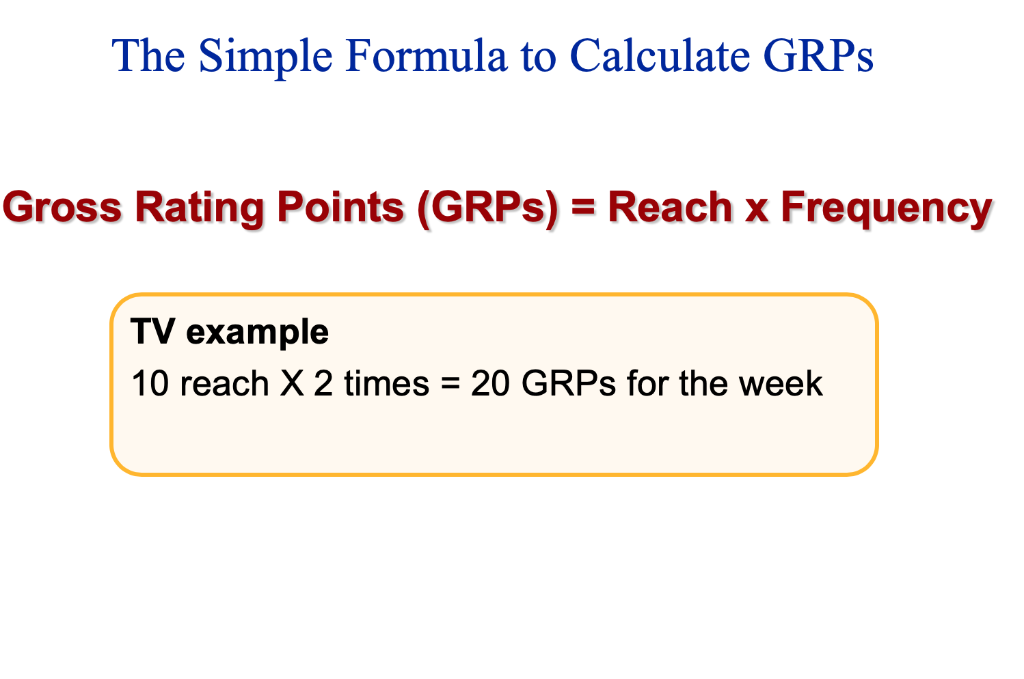Table Of Contents
What Are Gross Rating Points And How To Calculate It? – Step By Step Guide In 2021
The gross rating point, or GRP, is a metric for measuring advertising effectiveness based on weekly tv ratings and program rankings. Calculating GRP isn’t tricky, but interpreting the findings might influence whether a particular advertising campaign succeeds or fails.
Because TV ratings fluctuate every week, a company’s gross rating point must be constantly monitored for spikes or drops in viewership.
Therefore, it is nothing but a standard delivery point in media marketing. So, let?s know all about GRP in this article, and let?s start with its definition.
What Are Gross Rating Points?
The aggregate of all weekly points in the standings for a particular advertising program is the gross rating point. Thus, the total number of U.S. homes taking part in Nielsen ratings to analyze the audience size of TV programs is represented by these rating points.
A single rating point corresponds to 1% of the total number of people. According to the Nielsen website, 115.9 million people participated in Nielsen TV ratings during the 2010-2011 season. Therefore, a mere rating point of 1 is equivalent to 1,159,000 homes.
Why Are Gross Rating Points Important?
Gross Rating Points are used to determine the worth of advertisement delivery based solely on ad brand awareness in the media. It has no consideration for the effect or impact of diverse media or messages.
A single exposure in any media equals a single exposure in any other media. Because of this standardization, GRPs may be combined across media types to generate a single overall measure of the effectiveness of a campaign.
GRP is a metric used by marketers and advertisers to assess the effectiveness of specific advertisements. In other words, the more ratings a program receives, the more tv viewers are likely to see advertising or promoting spots.
As a result, acquiring advertising time on major network television shows is highly coveted for large and small businesses. Television networks understand the value of marketing these shows and charge ad prices based on the popularity of the shows. This is how, based on total weekly viewing, 30 seconds of ad time can cost millions.
How To Calculate Gross Rating Points?
To calculate GRP, an advertiser must first determine the total market percentage that a specific campaign reaches, as well as the number of times the promotion airs on a given television network.
According to a marketing advice website study, a marketer determines GRP for a campaign by multiplying the percent of overall market exposure by the amount of exposure in a week.
For example, a Gross Rating Points of 100 results from an ad reaching 20% of the marketplace with a weekly average exposure of five.
So, the calculation formula of GRPs is –
100 x Impressions / Defined population
What Is The Impact Of Gross Rating Points?
GRP’s influence on a marketing effort is deceiving. Although a high rating may suggest that a bigger group of customers watch a company’s adverts, this does not always imply that the campaign is successful. A successful promotional campaign is defined by advertisements that result in product sales.
Tracking sales figures can assist a company in assessing whether a high GRP is beneficial to the company or whether the marketing department needs to devise new methods for reaching the ideal customers. Researching what TV shows a firm’s clients watch, for example, can assist the business shift its advertising to more productive terrain.
Media planners can calculate the number of views they could generate through specific platforms and campaigns by estimating GRPs. Likewise, media buyers can get data on the population they could reach and contrast it to the general population.
You compute GRP if you need to know the amount of efficacy of your campaign Consequently, you’ll be able to identify the tactics that perform best with your target audience. Then, you can select the appropriate channels and send messages that resonate with them.
It’s vital to keep in mind that GRPs are only used for planning and measurement. GRP reveals the number of viewers a show receives, the demographics the advertisers seek to accomplish, and the sort of content audiences like. So, it does have an impact on advertisement pricing.
Frequently Asked Questions (FAQs)
So far, we have covered a lot of topics related to gross rating points. We have talked about its impact, importance, and valuation formula. So, if you want to know more about it, let?s take a look at this section.
1: What Is GRP In Media Buying?
Ans: Gross Rating Points can help you decide how big of an impact your advertisement had on the audience. It is a significant parameter in media buying because you can measure the potential scale and volume of the advertisement?s exposure.
2: What Is A Good GRP?
Ans: According to media planners, a consecutive GRP of 150 points for 3 months in a row is considered a good GRP. After that, you simply have to measure the target market and multiply it with the derived exposure frequency of your advertisement. So, if your target audience is 30% of the market, and you run four ads for them, your GRP would be 120.
3: What Is The Difference Between A GRP, And A TRP?
Ans: TRP is the acronym of Television Rating Point, and this metric is used to get the target audience?s impression of an advertising campaign. While the GRPs try to measure the total audience exposure, TRPs try to measure the target audience exposure. 1 GRP means you get 1% of the tot6al audience, but 1 TRP means you get 1% of the target audience.
The Bottom Line
Simply put, GRP is a mathematical formula used mainly by media managers and purchasers to figure out how many individuals in a target group have seen their commercials. Because marketers do not buy just one TV show or one TV network, there is additional complexity.
However, the purpose of a GRP is to estimate and measure an ad’s total exposure among a target population. Hence the approach varies based on the advertiser’s goals. So, if you want to know more about GRP, let us know in the comment section.
Read More,












Leave A Comment